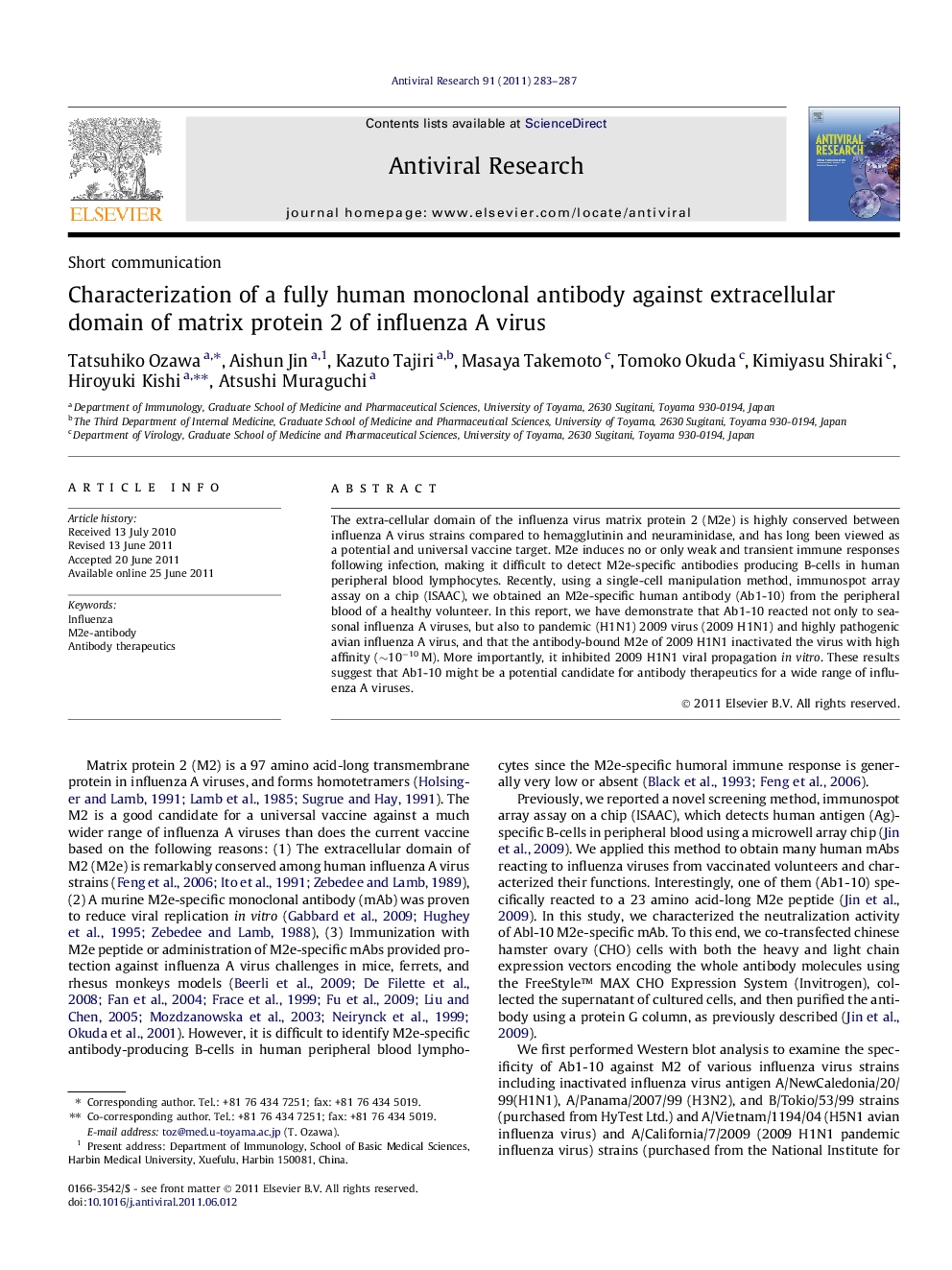| Article ID | Journal | Published Year | Pages | File Type |
|---|---|---|---|---|
| 2510276 | Antiviral Research | 2011 | 5 Pages |
The extra-cellular domain of the influenza virus matrix protein 2 (M2e) is highly conserved between influenza A virus strains compared to hemagglutinin and neuraminidase, and has long been viewed as a potential and universal vaccine target. M2e induces no or only weak and transient immune responses following infection, making it difficult to detect M2e-specific antibodies producing B-cells in human peripheral blood lymphocytes. Recently, using a single-cell manipulation method, immunospot array assay on a chip (ISAAC), we obtained an M2e-specific human antibody (Ab1-10) from the peripheral blood of a healthy volunteer. In this report, we have demonstrate that Ab1-10 reacted not only to seasonal influenza A viruses, but also to pandemic (H1N1) 2009 virus (2009 H1N1) and highly pathogenic avian influenza A virus, and that the antibody-bound M2e of 2009 H1N1 inactivated the virus with high affinity (∼10−10 M). More importantly, it inhibited 2009 H1N1 viral propagation in vitro. These results suggest that Ab1-10 might be a potential candidate for antibody therapeutics for a wide range of influenza A viruses.
